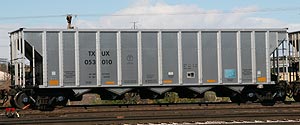
Beginning in the late 1970s, fully automated bottom dump cars came into widespread use. Fully automated bottom dumpers use onboard compressed air to pneumatically open and close the discharge gates. The gates are activated using a large button located on the side of each car over the right wheelset. An electrical current applied to the button will open or close the gates. This allows bottom dump trains to unload while moving - usually at creep speeds around 2 to 3 mph. Modern "rapid-discharge" bottom dump railcars can completely empty in 5 to 10 seconds per car. This allows a bottom dump coal train to unload at a power plant very quickly - generally more quickly than rotary dump operations. Bottom dump unloading facilities at power plants are generally much cheaper to build and operate.
Bottom dump cars do have a few disadvantages. First, because of the extra hardware associated with the discharge gates, the cars are more expensive to purchase and also more expensive to maintain. More moving parts means more things to break! Also, bottom dump cars are more susceptible to unloading problems due to freezing. Coal always contains some amount of moisture which can cause the load to freeze solid inside the railcars in harsh winter environments. Proper thawing at the power plants is required; but even then chunks of frozen coal can still remain stuck inside bottom dump cars.
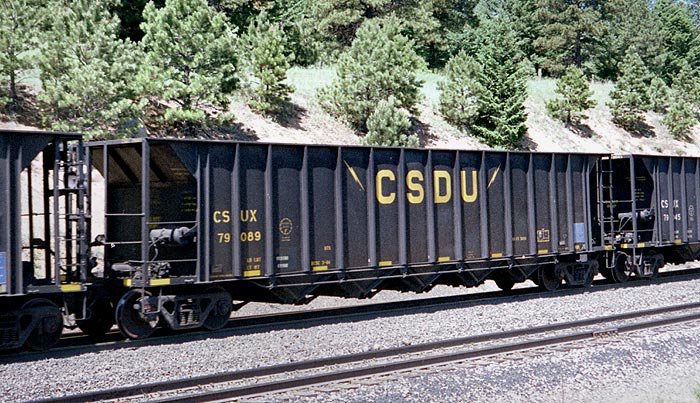
CSUX 79089 is an example of a first-generation steel-bodied automated bottom-dump hopper. This represents the first "rapid disharge" design where multiple discharge gates open simultaneously to essentially open the entire floor.
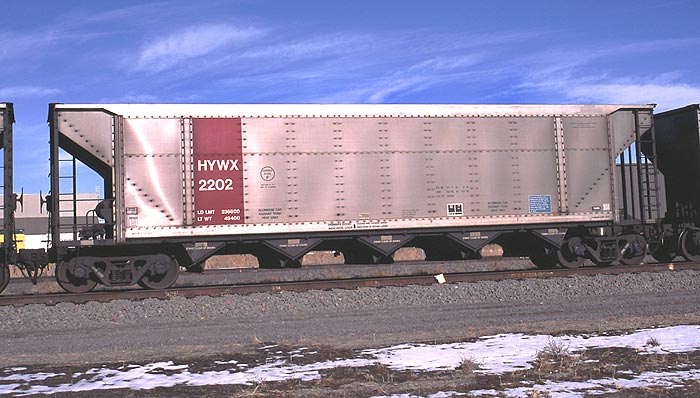
HYWX 2202 is an aluminum-bodied automated bottom dump hopper with interior posts. Although the interior post design allows a slightly higher capacity, coal is more likely to stick inside and as a result this car style is not popular.
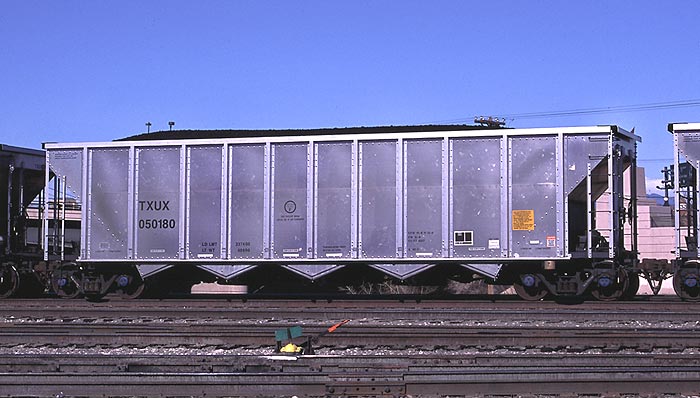
TXUX 050180 is a good example of of a typical aluminum-bodied exterior-post automated dump hopper. The square item below the body sill (above the right wheelset) is the actuator for the discharge doors.
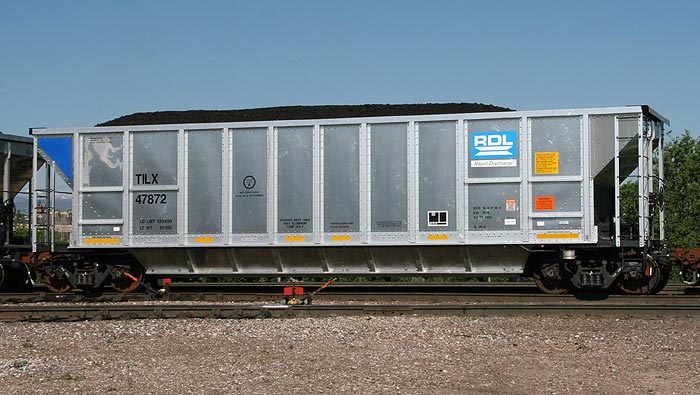
Here is the latest technology in bottom-dump car design. This is Trinityrail's RDL (for Rapid Discharge - Longitudinal) design. Unlike conventional rapid-discharge cars which utilize muliple discharge gates oriented transverse to the car's long axis, the RDL design uses a single set of doors oriented parallel to the car's long axis. This minimizes moving parts and increases capacity. Several RDL trains operate in Colorado, including these TILX leasers in service on the BNSF to Southwest Public Service and WFAX leasers in service to Tri-State's Craig station.